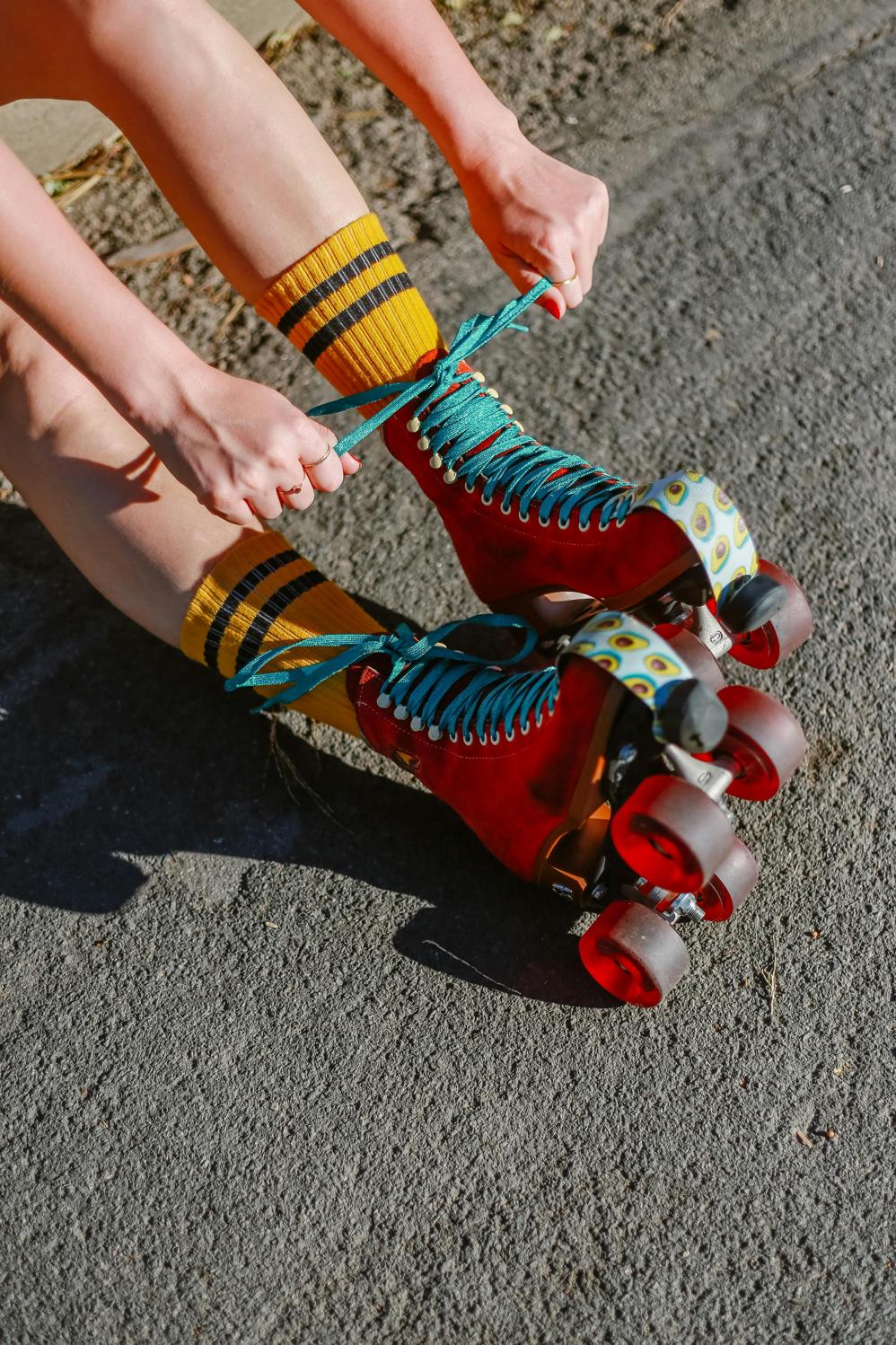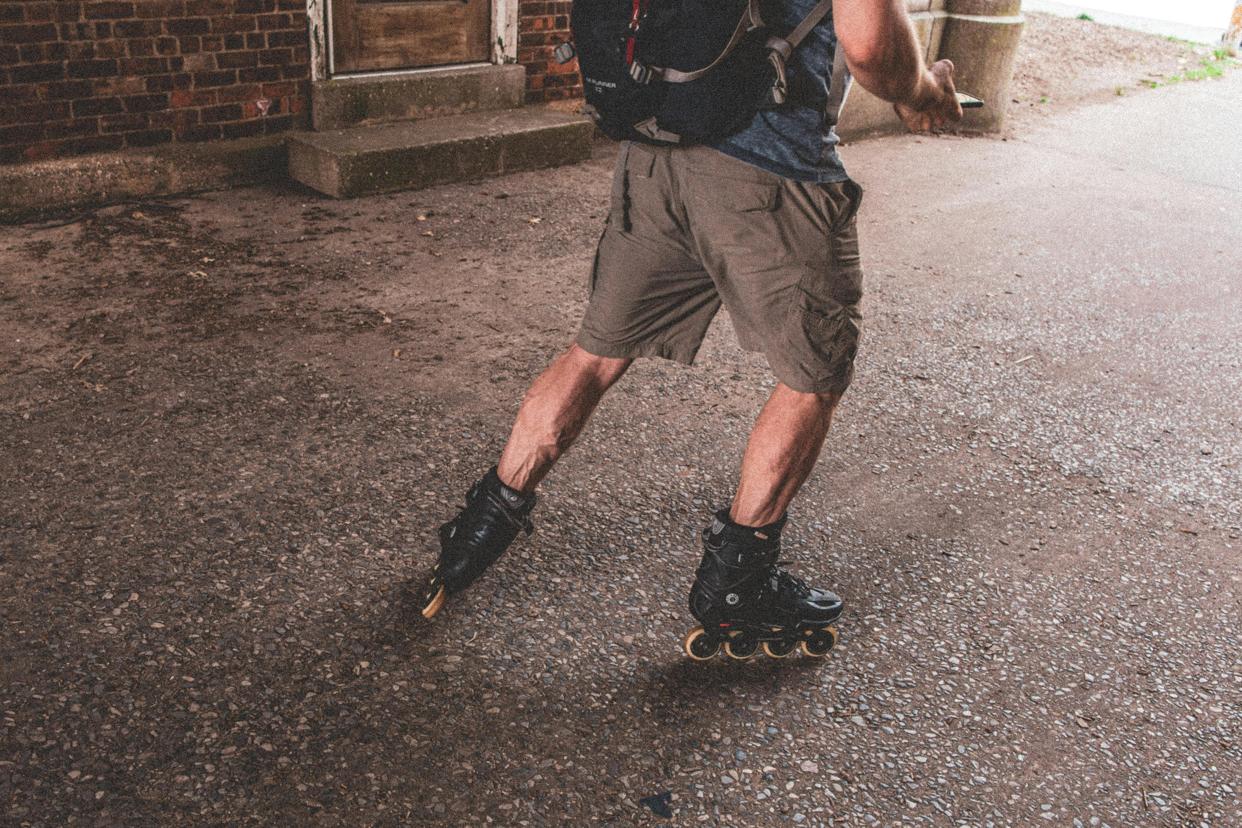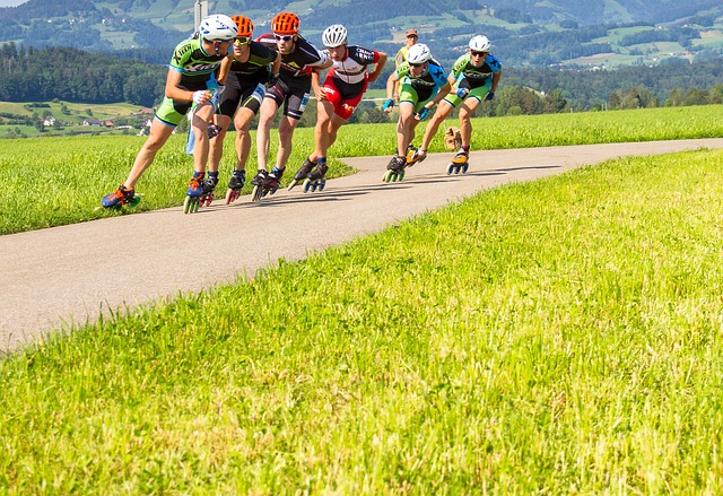Introduction
Inline skating, often called rollerblading, is a popular activity loved by people of all ages. It combines excitement and fitness in a unique way, making it an enjoyable hobby or a challenging sport. Whether you’re looking to learn a new skill, stay in shape, or dive into an exhilarating pastime, inline skating offers endless opportunities.
From its origins to achieving the perfect fit for your skates, this comprehensive guide covers everything you need to know about inline skating. By the end, you’ll be ready to lace up your skates and roll confidently, equipped with knowledge and enthusiasm.

The Basics of Inline Skating
Definition and History
Inline skating refers to moving on skates with wheels arranged in a single line, as opposed to being side-by-side like traditional roller skates. This setup allows for greater speed and agility, making it a favored choice among skaters. Inline skates gained popularity in the 1980s when they became synonymous with the brand Rollerblade, hence the alternative name rollerblading. The sport continues to evolve, attracting newcomers and seasoned skaters alike.
Health Benefits
Engaging in inline skating boasts numerous health benefits. It provides an excellent cardiovascular workout, improving heart health and endurance. Skating also strengthens various muscle groups, particularly the legs, core, and glutes, enhancing balance and coordination. Additionally, it’s a low-impact activity, reducing the risk of joint injuries relative to other forms of exercise.
Inline Skating vs. Roller Skating
While inline skating and roller skating share similarities, they differ in wheel configuration, speed, and maneuverability. Inline skates typically have 3-5 wheels in a single line, enabling smoother and faster movement. In contrast, roller skates have four wheels arranged in a two-by-two pattern, offering more stability but less speed. Choosing between the two depends on personal preference and the type of skating experience desired.
Essential Inline Skating Equipment
Different Types of Inline Skates
When venturing into inline skating, selecting the right skates is crucial. There are various types to consider:
1. Recreational Skates: Ideal for beginners and casual skaters. These skates prioritize comfort and ease of use.
2. Fitness Skates: Designed for those looking to skate as a workout routine. They offer better support and performance.
3. Aggressive Skates: Built for tricks and stunts, these skates have a robust construction.
4. Speed Skates: As the name suggests, these are for those interested in racing and high-speed skating. They’re lightweight and have larger wheels.
Protective Gear: Helmets, Pads, and Guards
Safety should always be a priority in inline skating. Essential protective gear includes:
– Helmets: Protects the head from injuries. Make sure it’s certified for inline skating.
– Wrist Guards: Prevents wrist fractures and sprains.
– Knee Pads: Shields knees from impacts during falls.
– Elbow Pads: Protects elbows, which are common injury points in falls.
Additional Accessories
To enhance your skating experience and ensure safety, consider these accessories:
– Reflective Clothing: Important for visibility during evening rides.
– Hydration Packs: Stay hydrated during long skating sessions.
– Maintenance Tools: Handy for on-the-go adjustments and repairs.

How to Choose the Right Inline Skates
Choosing the right skates ensures a comfortable and enjoyable experience. Let’s delve into the factors to consider.
Sizing and Fit
Proper sizing and fit are critical to comfort and performance when inline skating. Here’s how to ensure you get the right size:
1. Measure Your Foot: Use a ruler or measuring tape to find the length and width of your feet.
2. Refer to Size Charts: Brands often have specific sizing charts; ensure you check these.
3. Try Before You Buy: If possible, try on different brands and models to find the best fit.
Boot Types
Inline skate boots come in various types:
– Soft Boots: Provide more comfort and ventilation, suitable for casual and fitness skaters.
– Hard Boots: Offer increased support and protection, typically found in aggressive and speed skates.
Wheels and Bearings
The wheels and bearings of your inline skates significantly affect your skating experience:
– Wheels: Consider the size (larger for speed, smaller for control) and hardness (softer for grip, harder for durability).
– Bearings: Rated by the ABEC scale; higher ratings usually translate to smoother rotations and better performance.
Maintenance and Care Tips
Maintaining your skates not only extends their lifespan but also ensures a smooth and safe skating experience.
Cleaning Your Skates
Regular maintenance can extend the life of your skates and enhance performance:
1. Wipe Down: After every session, wipe down your skates to remove dirt and moisture.
2. Clean Bearings: Remove and clean bearings periodically with a suitable solvent to ensure smooth rolling.
3. Inspect for Damage: Regularly check for wear and tear, addressing any issues immediately.
Replacing Parts: Wheels and Bearings
Replacing parts as they wear out keeps your skates in optimal condition:
– Wheels: Rotate the wheels regularly to ensure even wear and replace them when they lose their shape.
– Bearings: Swap out bearings that no longer roll smoothly or are visibly damaged.

Advanced Tips for Enthusiasts
For those who are passionate about inline skating, there are always ways to enhance your experience further.
High-Performance Skates
For those looking to take their skating to the next level, high-performance skates offer advanced features such as:
– Enhanced Support: Better ankle and foot support for longer skating sessions.
– Improved Maneuverability: Designed for more precise control.
– Lighter Materials: Reduces fatigue, allowing you to skate longer and faster.
Custom Modifications
Many enthusiasts tweak their skates to better suit their needs:
– Custom Liners: Provide a more personalized fit.
– Upgraded Wheels and Bearings: Enhance speed and performance.
– Adjustable Frames: Allow for more custom setups.
Conclusion
Inline skating offers a fantastic mix of fun, fitness, and adventure. Whether you’re a beginner or an experienced skater, understanding the basics, selecting the right equipment, and maintaining your skates are key to enjoying this exhilarating activity. Happy skating!
Frequently Asked Questions
What is the difference between inline skating and roller skating?
Inline skating features wheels in a single line, allowing for greater speed and maneuverability. Roller skating uses a two-by-two wheel configuration, providing more stability but less speed.
How should I maintain my inline skates?
Regularly clean your skates, check for damage, and replace worn-out parts like wheels and bearings to keep them in good condition.
What protective gear do I need for inline skating?
Essential protective gear includes a certified helmet, wrist guards, knee pads, and elbow pads, all crucial for ensuring safety while skating.
